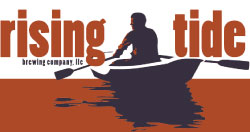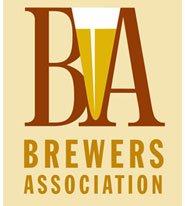A well-read food blogger has convinced the world’s largest brewers to publish, for the first time, a list of ingredients used to make its most popular beers.
The North Carolina-based food activist, Vani Hari, who goes by the title “The Food Babe,” yesterday launched an online campaign urging Anheuser-Busch InBev and MillerCoors to disclose a complete set of ingredients that are in the finished versions of beers like Budweiser and Miller Lite.
In a video posted to YouTube, Hari claimed that beer giants like A-B InBev and MillerCoors “don’t have to put the ingredients on the label — or on their website or tell us anything about the beer we are drinking and buying.”
As of noon EST on Thursday, Hari had received more than 40,000 online signatures to her petition, which led to public responses (below) from both companies. Both A-B InBev and MillerCoors agreed to disclose information about the ingredients used to make their most popular brands.
Hari’s call for greater transparency first came in July 2013 when she accused large brewers of using “shocking ingredients” like propylene glycol, genetically modified sugars and corn, caramel coloring, and isinglass (a substance obtained from the dried swim bladder of fish), among others, in their beers.

“I immediately dismissed her article,” said Joe Casey, the brewmaster and director of brewing for Craft Brew Alliance. “There is a bit of sensationalism in her article. The reason why I didn’t put much weight in it is because there is no mention of how much of these ingredients are included in a finished beer.”
Casey, who has degrees in in biology and brewing and has been making beer commercially for 19 years, said many of the ingredients listed in Hari’s article are rarely used at craft breweries today.
“Isinglass is pretty outdated technology,” he said. “Sure there are people that use it, but is it used commonly? No. I highly doubt that any large brewers use it. There are much better and cheaper solutions.”
Casey also noted that a majority of the U.S. corn now being grown is “GMO.”
Indeed, according to a National Agricultural Statistics Boars annual report from June, 2010, 90 percent of corn grown in the U.S. is genetically modified.
Chuck Skypeck, the technical brewing coordinator for the Brewers Association, expressed similar viewpoints.
“When the Food Babe’s article came out last year, my big impression was that she was working on decades old information,” he wrote in an email to Brewbound. “I do think some of the additives she mentioned were in use in the 1970’s and 80’s, but not any longer.”
Despite the backlash against Hari from the brewing community, a consumer advocacy organization has supported her efforts.
The Center for Science in the Public Interest issued a statement earlier today urging its readers to sign the petition.
“Thirty years ago the Center for Science in the Public Interest petitioned and then sued the government to get ingredients listed on labels of alcoholic beverages,” wrote Michael Jacobson, the co-founder and executive director for the group. “But the government largely slammed the door on that idea–requiring only allergens like sulfites and Yellow 5 to be labeled. I hope that Vani Hari’s petition will persuade the two biggest brewers–and other companies–to do voluntarily what the government has failed to require them to do.”
Nonetheless, at least one small craft brewer using one of the so-called “shocking” ingredients, isinglass, in a limited capacity and isn’t afraid to admit it. Nathan Sanborn, the co-founder of Portland, Maine’s Rising Tide Brewing Co., called the substance a processing agent, not an ingredient, because it does not end up in the finished product.

Sanborn, who said he would have no problem publishing a list of ingredients used to make his beers, also felt as though Hari’s original blog was somewhat sensationalized.
“The broad brush that she used to paint the brewing industry — as a bunch of evil people producing poison — is bad for us and is technically false,” he said.
Nevertheless, he understands and even applauded A-B InBev for agreeing to publish its ingredients.
“I think they have been feeling a lot of pressure,” he said. “I think it was good business to say ‘Hey look, we are not the evil guys here. We are not producing poison. We are using natural ingredients and you may not like our beer or our business practices, but we are not filling our beer with chemicals.’”
But with the country’s two largest beer companies now agreeing to publish its ingredients online, questions are being raised about potential future labeling requirements. The Alcohol and Tobacco Tax and Trade Bureau (TTB), which regulates beer labels, does not currently require brewers to list nutritional facts or ingredient information.
Sanborn said the costs associated with adding a nutrition facts panel to his company’s labels would be massive and would likely prohibit him from continuing to experiment with new styles.
“There would be a lot of extra costs,” he said. “Anything that requires me to do additional testing will reduce my enthusiasm for producing small, one-off beers.”

“We don’t have a problem if it’s required,” Gatza had said. “It is the consumer’s right to know. At a minimum, the option should exist for brewers to put that [serving facts] on there.”
But additional requirements such as displaying caloric, carbohydrate, fat and protein measurements would be “burdensome,” the organization said.
Chris Thorne, the vice president of communications for The Beer Institute, said that given the complexity of the issue, it remains to be seen whether this would open the door to further debate over nutritional labeling on beer.
“There is a difference between nutritional labeling and ingredient labeling,” he said. ‘The bulk of the regulation involves nutritional labeling. All brewers already have to submit brewing ingredients and formulas to the TTB as part of their compliance and also have to comply with a number of state regulations.”
For its part, A-B InBev has already published the ingredients used to make Budweiser and Bud Light, two of the companies best-selling products. It plans to disclose ingredient information for its additional brands on the website www.tapintoyourbeer.com in the coming days.
A-B InBev’s official statement regarding the disclosure of ingredients is below.
“We provide significant information about our beer and their nutritional content through both our consumer hotline (1-800-DIAL-BUD) and our global consumer-information website www.tapintoyourbeer.com, which we have expanded over the years. This exceeds what is required of alcohol producers and is beyond what many other beer, wine and hard liquor producers provide. However, as American consumer needs evolve, we want to meet their expectations. Therefore, we are working to list our beer ingredients on our website, just as you would see for other food and non-alcohol beverage producers. We are beginning immediately, having incorporated this information earlier today on www.tapintoyourbeer.com for our flagship brands, Budweiser and Bud Light, and will be listing this for our other brands in the coming days.”
MillerCoors also responded to Hari’s claims via its Facebook page. In part, the statement reads:
“We also value transparency and are happy to comply with the request for additional information. Earlier this year, we led all alcohol companies by voluntarily placing a nutritional label on our Miller64 brand and we will be putting more ingredient information online in the days ahead.We will be including the ingredient list starting with our most popular brands, representing the overwhelming majority of our brand volume:
Coors Light, Miller Lite, Blue Moon Belgian White, Coors Banquet, Miller Genuine Draft, Miller High Life, Keystone Light and Miller Fortune.”
